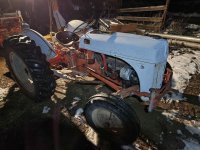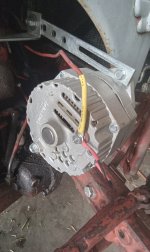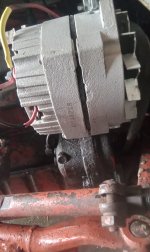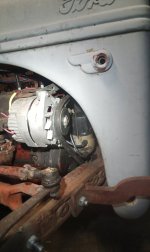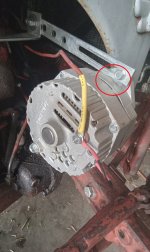Hi all, I got a tractor yesterday that I'm trying to chase down an electrical gremlin on. It's a 48 8n and it's not starting, cranking, or even clicking at this point. I went to look at it before buying the other day and it fired right up. It was towed about 2 1/2 hours through the rain and wouldn't start when it got here, had to pull start it. After it sat for a couple hours and dried out I tried again, fired right up and ran like a top. Fast forward to this evening when I try to start it, I press the button and get a "click" (like a dead battery). Tried again a few times but now I'm not even getting a "click."
For a little more context: the seller is a mechanic and went through the wiring (including the distributor) to get things working as good as possible while he used it on his property. It has a 6 volt system but with a 1 wire alternator. That said, to get past the charging issues with the 1 wire conversion he wired in a battery tender. He said he never had an issue so long as he plugged in the tender. I plugged it in after driving it yesterday and the charger was green when I tried starting it today. I plugged it back in and now it's back to charging. I know those tenders probably aren't a reliable source for diagnosing a dead battery, but nevertheless it seems odd that I wouldn't get any signs of life even if the battery was drained.
I'm one of those guys who can turn a wrench alright but doesn't have the faintest clue when it comes to electrical problems, so any help as to where to start looking would be appreciated
For a little more context: the seller is a mechanic and went through the wiring (including the distributor) to get things working as good as possible while he used it on his property. It has a 6 volt system but with a 1 wire alternator. That said, to get past the charging issues with the 1 wire conversion he wired in a battery tender. He said he never had an issue so long as he plugged in the tender. I plugged it in after driving it yesterday and the charger was green when I tried starting it today. I plugged it back in and now it's back to charging. I know those tenders probably aren't a reliable source for diagnosing a dead battery, but nevertheless it seems odd that I wouldn't get any signs of life even if the battery was drained.
I'm one of those guys who can turn a wrench alright but doesn't have the faintest clue when it comes to electrical problems, so any help as to where to start looking would be appreciated


